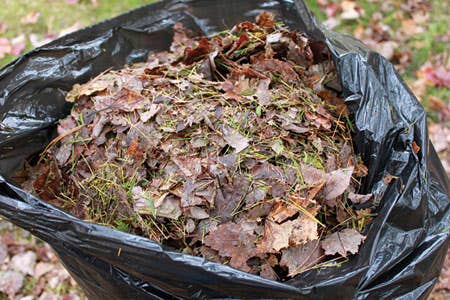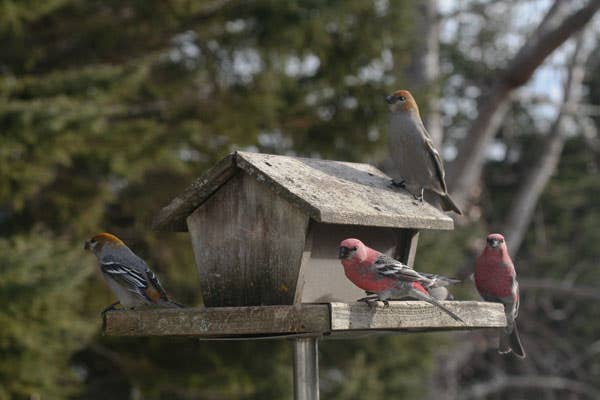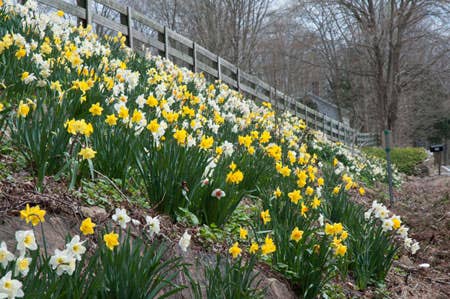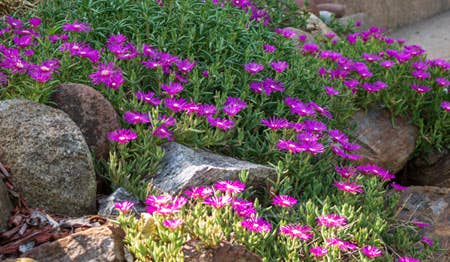Q&A: Weeping birch looking sad
Question: My weeping birch seems to be “half” dead. One side is leafing out, but the other is not. What causes this and how can I save this beautiful tree?—EG, by e-mail
Question: My weeping birch seems to be "half" dead. One side is leafing out, but the other is not. What causes this and how can I save this beautiful tree?—EG, by e-mail
Answer: What you describe sounds like an attack of the birch tree’s great enemy in the pest world — the bronze birch borer. Check branches for this miniscule pest’s mark: raised ridges or small bumps on the bark. Without seeing your weeping birch, it’s hard to tell if it’s too late, for if more than 50 percent of the crown of the tree has been damaged, then this pest’s mark could be deadly.
But, by taking swift action against this birch killer, there could be time to make your weeping birch’s sad appearance whimsical once more. According to “How to Grow and Maintain a Healthy Birch Tree,” released by the United States Department of Agriculture Forest Service, the first step is to simply reinforce good health by mulching and watering properly. Birch trees thrive in cool, moist soil; help suffice this need with regular deep, heavy watering sessions. Then, apply insecticides to the bark on the branches and main stem to prevent new attacks. This will not kill insects already under the bark, but will stop new waves. Consult your local County Extension office for specific insecticides and recommended times of the year for applications. According to the USDA Forest Service, three applications may be needed through the spring and summer months to fight off this pest.
This last tip to fighting the pest is very important, for it is a common mistake that makes your birch like a searing filet mignon in the eyes of the bronze birch borer, whether it is infected already or not. Do not prune, even the dead branches, until the fall or winter. May 1–Aug. 1 is the flight period of the Bronze Birch Borer and the females are especially attracted to the wounds left by freshly pruned wood.
Preventing pest attacks in your birch
Many birch trees are predisposed for infestation and poor health from the second they are planted next to your white gazebo or koi pond. According to the USDA Forest Service, “Homeowners have predisposed their birch trees to problems by planting and growing them under conditions that are not best for their survival.”
The resulting poor health is what weakens your birch to attacks by the bronze birch borer and another common birch pest, the birch leafminer. Follow these steps to help ensure good health for your tree, starting with your selection.
- Choose a variety of birch that is less susceptible to the bronze birch borer. Generally, those with white bark are more prone, although there are exceptions.
- Select the appropriate location for planting to encourage a healthy tree years down the road. Find a plot where the soil will be cool, moist and shaded, but also where the leaves will receive sun. Often, the east and north sides of a home are good locations. Other trees nearby can often supply sufficient shade too. Beware of overhead power lines since birch trees can grow upward to 40–50 feet.
- Maintain health through mulching and proper watering to help preserve that cool and moist soil that a birch thrives in. One large and deep watering is preferred rather than infrequent ones.
- Monitor and control insects and pests by taking care of a problem before it consumes the tree beyond repair. Remember to not prune your birch from May 1–Aug. 1, as to avoid attracting the bronze birch borer. Also, even though the leafminer will not kill the tree, it can affect the overall health, making the birch more susceptible to the bronze birch borer. If leafs start having brown spots on them, see your county extension office for insecticides.
Strange growth, no blooms or are you wondering the best way to transplant? Just ask, and the Horticulture editorial team will take a stab at answering your ailment or query. E-mail edit@hortmag.com







